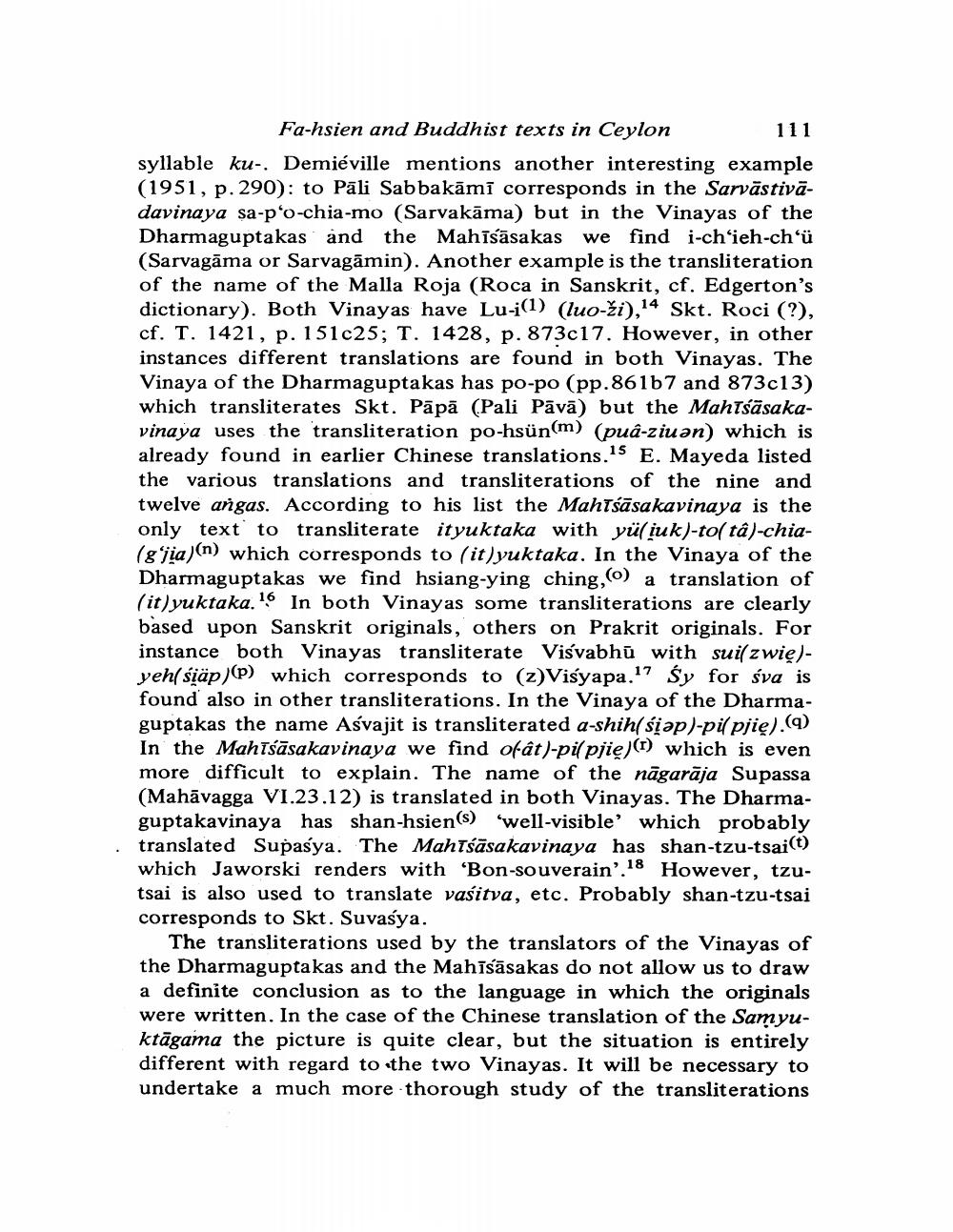________________ Fa-hsien and Buddhist texts in Ceylon 111 syllable ku-. Demieville mentions another interesting example (1951, p. 290): to Pali Sabbakami corresponds in the Sarvastivadavinaya sa-p'o-chia-mo (Sarvakama) but in the Vinayas of the Dharmaguptakas and the Mahisasakas we find i-ch'ieh-ch'u (Sarvagama or Sarvagamin). Another example is the transliteration of the name of the Malla Roja (Roca in Sanskrit, cf. Edgerton's dictionary). Both Vinayas have Lu-i(1) (luo-zi),14 Skt. Roci (?), cf. T. 1421, p. 151025; T. 1428, p. 873c17. However, in other instances different translations are found in both Vinayas. The Vinaya of the Dharmaguptakas has po-po (pp.86167 and 873c13) which transliterates Skt. Papa (Pali Pava) but the Mahisasakavinaya uses the transliteration po-hsun(m) (pua-ziuan) which is already found in earlier Chinese translations.15 E. Mayeda listed the various translations and transliterations of the nine and twelve angas. According to his list the Mahtsasakavinaya is the only text to transliterate it yuktaka with yu( iuk)-to( tâ)-chia(gʻjia)(n) which corresponds to (it)yuktaka. In the Vinaya of the Dharmaguptakas we find hsiang-ying ching, (o) a translation of (it)yuktaka. 16 In both Vinayas some transliterations are clearly based upon Sanskrit originals, others on Prakrit originals. For instance both Vinayas transliterate Visvabhu with suil zwie)yeh(siap)(p) which corresponds to (2)Visyapa.17 Sy for sva is found also in other transliterations. In the Vinaya of the Dharmaguptakas the name Asvajit is transliterated a-shih(si@p)-pil pjie).(9) In the Mahisasakavinaya we find ofat)-pil pjie) (I) which is even more difficult to explain. The name of the nagaraja Supassa (Mahavagga VI.23.12) is translated in both Vinayas. The Dharmaguptakavinaya has shan-hsien(s) 'well-visible' which probably translated Supasya. The Mahasasakavinaya has shan-tzu-tsai(t) which Jaworski renders with 'Bon-souverain'.18 However, tzutsai is also used to translate vasitva, etc. Probably shan-tzu-tsai corresponds to Skt. Suvasya. The transliterations used by the translators of the Vinayas of the Dharmaguptakas and the Mahisasakas do not allow us to draw a definite conclusion as to the language in which the originals were written. In the case of the Chinese translation of the Samyuktagama the picture is quite clear, but the situation is entirely different with regard to the two Vinayas. It will be necessary to undertake a much more thorough study of the transliterations




